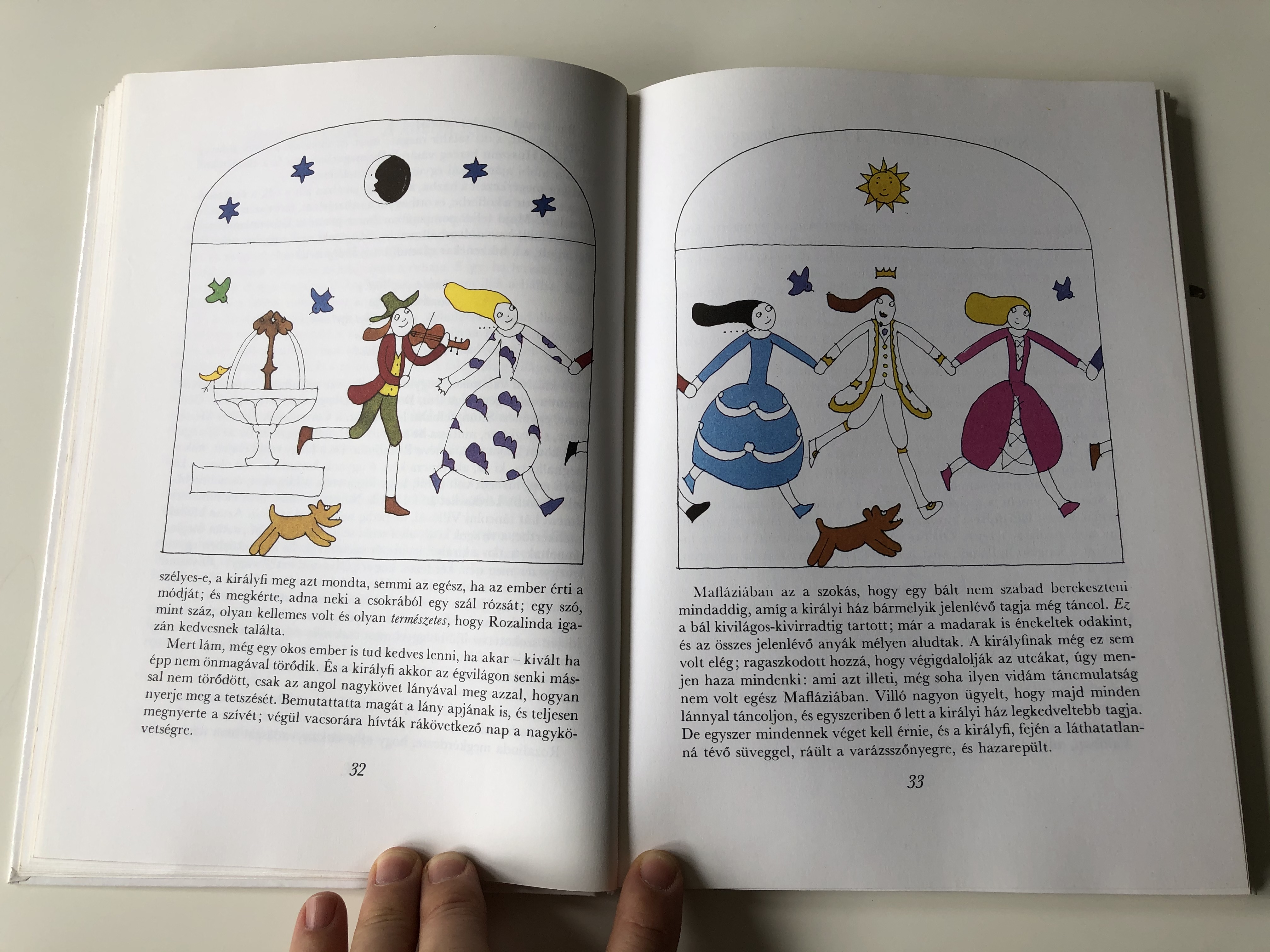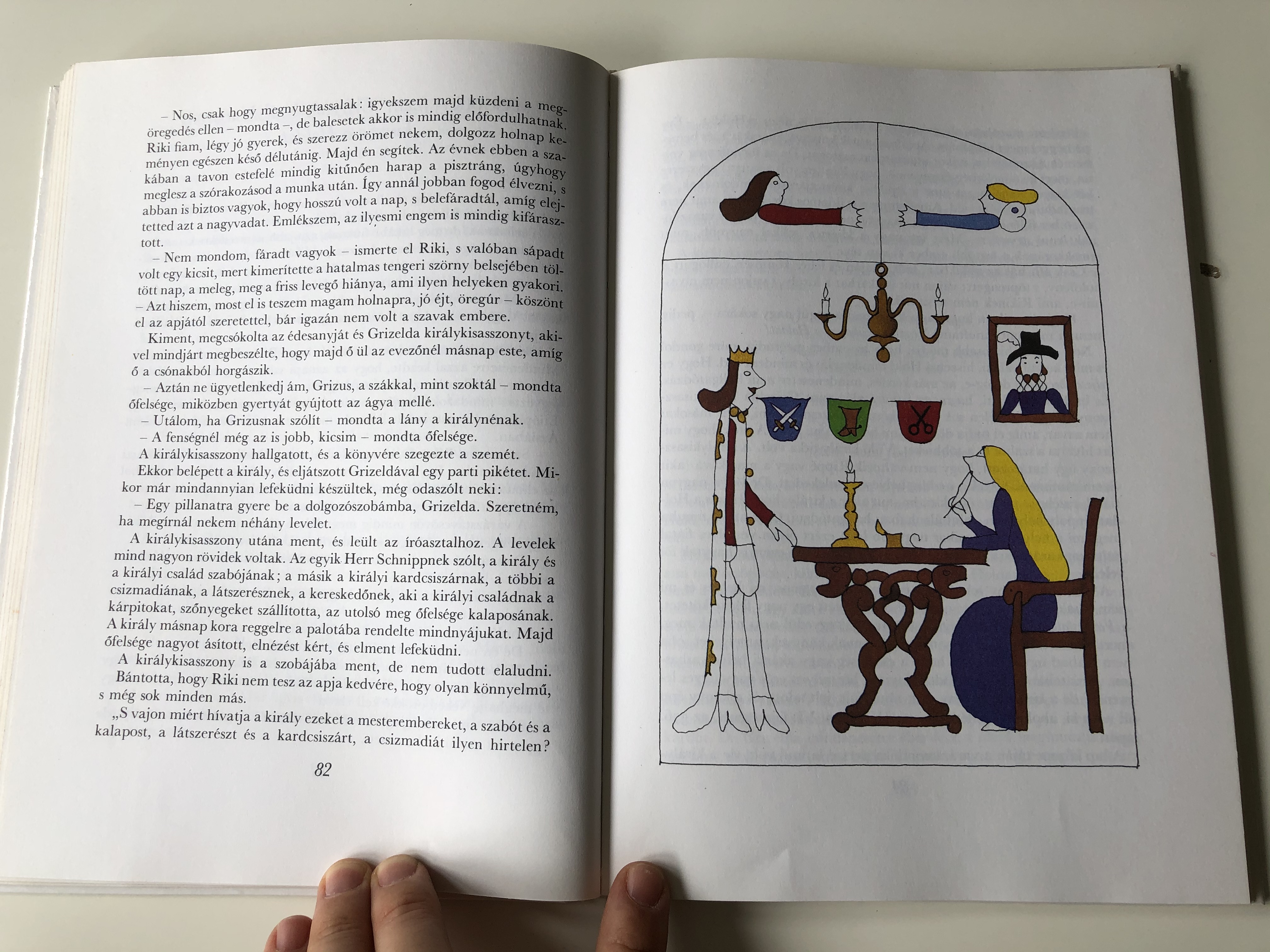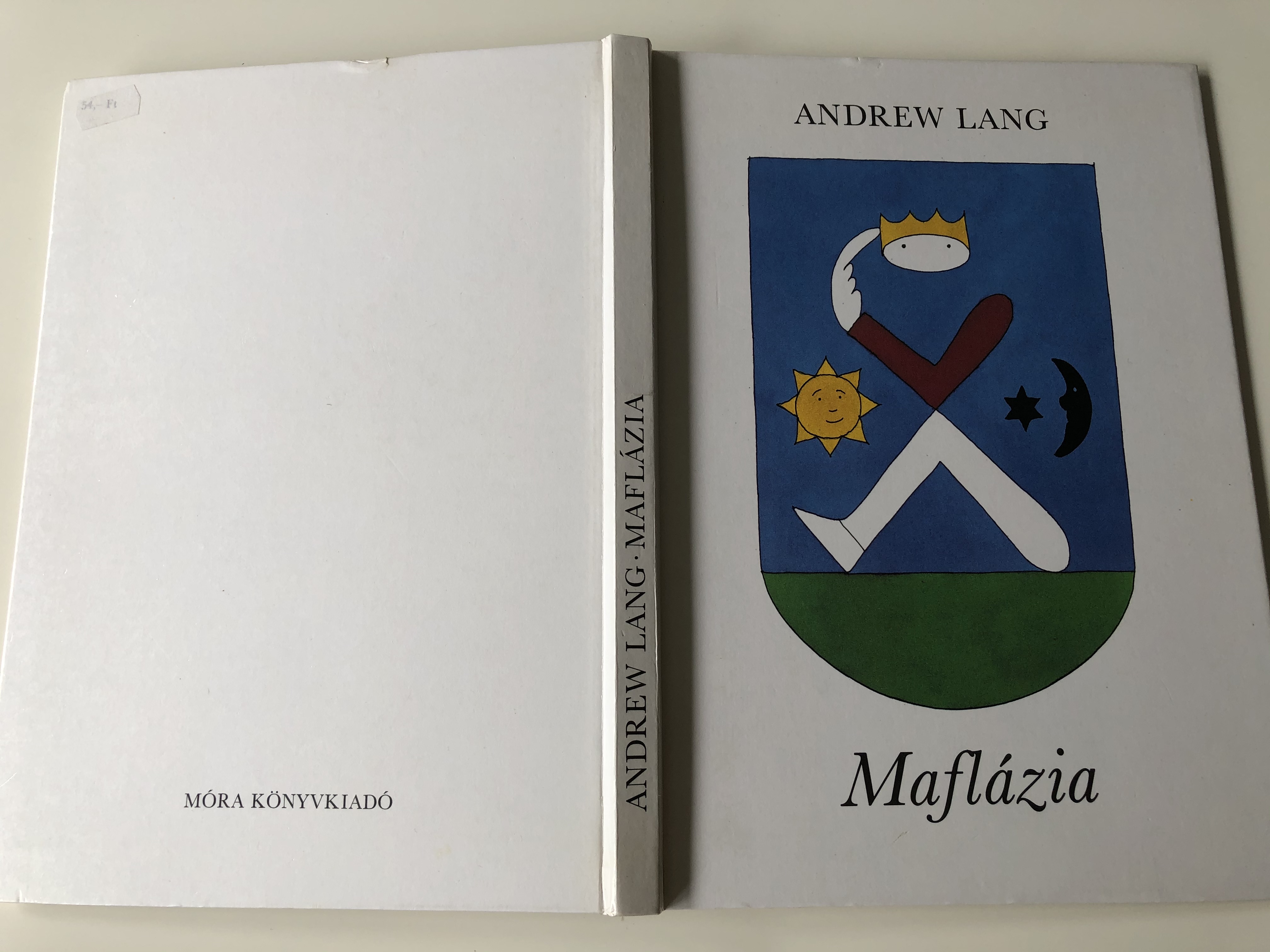Product Overview
Maflázia by Andrew Lang / Hungarian edition of Prince Prigio and Prince Ricardo / Illustrated by Réber László / Móra könyvkiadó 1984 / Translated by Göncz Árpád / Hardcover
Hardcover 1984
ISBN: 9789631131932 / 978-9631131932
ISBN-10: 9631131939
PAGES: 158
PUBLISHER: Móra könyvkiadó
LANGUAGE: HUNGARIAN / MAGYAR
Hungarian Description:
"Csókolj meg! - kiáltotta a sárkány, mely már sok vitéz lovagot fölfalt, mert nem voltak hajlandók megcsókolni őt.
- Hogy megcsókoljalak? - dünnyögte a herceg. - Ha csak az kell! Akármit egy békességes helyért.
S ezzel megcsókolta a sárkányt, mely azon nyomban átvedlett gyönyörűséges királykisasszonnyá..."
Dragonissza úrnő egyik alapítója lett annak a nevezetes királyi háznak, amelyből hősünk, Villó királyfi is származott. Ama nevezetes keresztelőn, ahová illik meghívni a tündéreket is, egy rosszmájú, gonosz tündér túl sok ésszel verte meg Villót, mondván: "Gyermekem, légy te túlontúl okos!" Így aztán a királyfi nem hisz olyan csudálatos kacatok varázserejében, mint a hétmérföldes csizma, a láthatatlanná tévő süveg, a soha-ki-nem-csorbuló kard.
Villó balszerencséjére beleszeret Rozalindába, s hogy szerelmét elnyerje, meg kell mérkőznie a tűzokádó sárkánnyal, így kénytelen elveiből engedni, és a megvetett varázstárgyak mindegyikét használja a győzelem érdekében.
Hősünk, Villó már révbe ért, ám fia, Rikárdó herceg apja meglepő ellentéte: egy lépést sem tesz a mesés eszközök nélkül. Villó király elhatározza, hogy embert farag a fiából, és minden csudás erejű tárgyat hét lakat alatt tart. Rikárdó kalandos útja csak azért végződik szerencsésen, mert szerelmese, Grizelda, aki mellesleg boszorkány, mindig a kellő időben segít rajta.
Lang lebilincselően érdekes meseregényét Göncz Árpád bravúros fordításában, Réber László nagyszerű grafikáival jelentetjük meg.
English Summary:
Andrew Lang's charming Fairy Tales together tell a history of the Kingdom of Pantouflia. These comic literary delights are not just for children, but for all people of all ages, especially those who "wish to seem no cleverer than other people.
Prince Prigio is a literary and comic fairy tale written by Andrew Lang in 1889, and illustrated by Gordon Browne. It draws in Lang's folklorist background for many tropes.
A sequel was published in 1893, Prince Ricardo of Pantouflia: Being the Adventures of Prince Prigio's Son. The two were issued in one 1895 volume as My Own Fairy Book: Namely, Certain Chronicles of Pantouflia, As Notably the Adventures of Prigio, Prince of That Country, and of His Son, Ricardo, with an Excerpt from the Annals of Scotland, As Touching Ker of Fairnilee, His Sojourn with the Queen of Faery. All three books were published by J. W. Arrowsmith of Bristol. My Own Fairy Book appeared during the run of "Coloured Fairy Books" edited by Lang and published in London and New York by Longmans, Green, and Co. from 1890: The Blue Fairy Book, The Red Fairy Book, and so on. Longmans was also the US publisher of the Pantouflia books.
The two stories were also published together as The Chronicles of Pantouflia by Little, Brown and Company in 1942, with illustrations by Robert Lawson, and by David R. Godine in 1981.
Tartalom / Contents:
| Előszó | 5 |
| Villó királyfi | |
| Miért nem kaptak meghívót a tündérek a királyi udvarba? | 9 |
| Villó királyfi és a családja | 13 |
| A tűzokádó sárkány | 15 |
| Villó királyfit mindenki cserbenhagyja | 20 |
| Mit talált Villó királyfi a toronyszobában? | 23 |
| Mi történt Villó királyfival a városban? | 25 |
| A királyfi szerelmes | 30 |
| A királyfi töpreng | 34 |
| A királyfi és a tűzokádó sárkány | 36 |
| A királyfi és a Remora | 9 |
| A párbaj | 41 |
| Szörnyű balszerencse | 44 |
| Meglepetések | 49 |
| A király magyarázkodik | 51 |
| A király csekkje | 55 |
| Csupa búbánat | 59 |
| A fekete macska és a királyfi két öccse | 63 |
| Itt a vége | 69 |
| Rikárdó királyfi | |
| Villó király gondban van | 75 |
| Grizelda királykisasszony kiissza a Holdat | 81 |
| A mesteremberek kalandja | 89 |
| Két lecke | 96 |
| Rikárdó királyfi beleszól a történelembe | 104 |
| Rikárdó magába száll | 115 |
| Rikárdó királyfi és egy régi ellensége | 122 |
| Az óriás, aki rá se ránt semmire | 130 |
| Villó királynak támad egy ötlete | 138 |
| .....Fuss el véle! | 147 |
About the Author:
Andrew Lang FBA (31 March 1844 – 20 July 1912) was a Scottish poet, novelist, literary critic, and contributor to the field of anthropology. He is best known as a collector of folk and fairy tales. The Andrew Lang lectures at the University of St Andrews are named after him.
Lang was born in 1844 in Selkirk, Scottish Borders. He was the eldest of the eight children born to John Lang, the town clerk of Selkirk, and his wife Jane Plenderleath Sellar, who was the daughter of Patrick Sellar, factor to the first Duke of Sutherland. On 17 April 1875, he married Leonora Blanche Alleyne, youngest daughter of C. T. Alleyne of Clifton and Barbados. She was (or should have been) variously credited as author, collaborator, or translator of Lang's Color/Rainbow Fairy Books which he edited.
He was educated at Selkirk Grammar School, Loretto School, and the Edinburgh Academy, as well as the University of St Andrews and Balliol College, Oxford, where he took a first class in the final classical schools in 1868, becoming a fellow and subsequently honorary fellow of Merton College. He soon made a reputation as one of the most able and versatile writers of the day as a journalist, poet, critic, and historian.[2] He was a member of the Order of the White Rose, a Neo-Jacobite society which attracted many writers and artists in the 1890s and 1900s.[3] In 1906, he was elected FBA.[4]
He died of angina pectoris on 20 July 1912 at the Tor-na-Coille Hotel in Banchory, Banchory, survived by his wife. He was buried in the cathedral precincts at St Andrews, where a monument can be visited in the south-east corner of the 19th century section.


























